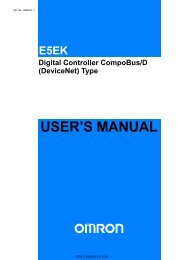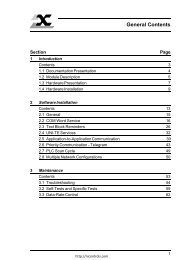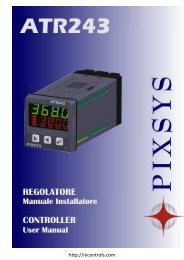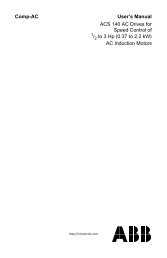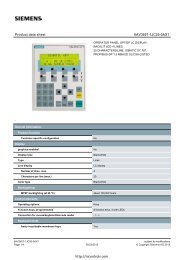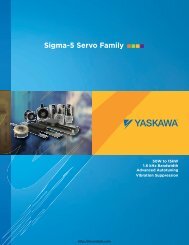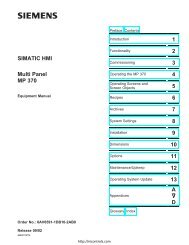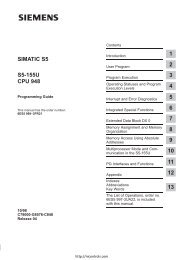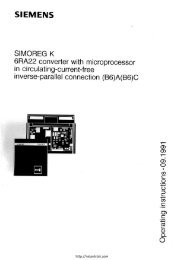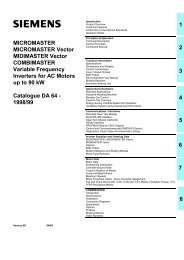IFC 110 F V2.0 IFC 110 F-EEx V2.0 - Krohne
IFC 110 F V2.0 IFC 110 F-EEx V2.0 - Krohne
IFC 110 F V2.0 IFC 110 F-EEx V2.0 - Krohne
You also want an ePaper? Increase the reach of your titles
YUMPU automatically turns print PDFs into web optimized ePapers that Google loves.
Part A System installation and start-up Sect. 2.62.6 Connection diagrams of outputs and inputsIMPORTANT!For <strong>EEx</strong> versions, also pay regard to all directions included in Sect. 6.1 and 13.Only the <strong>EEx</strong> flow sensor may be installed in the hazardous area. The <strong>EEx</strong>certified signal converter must be installed outside the hazardous area!IP, A1*A1*, A2,D1, D2C1, C2Current output (included HART ® )Pulse outputStatus outputsControl inputsTotalizer-electromechanical (EMC)- electronic (EC)milliampmeter0-20 mA or 4-20 mA and otherPlease note ! Unwiredcontacts or terminals may nothave any conductiveconnection with otherelectrically conducting parts.Interface operation withHART ® or RS 485 (Option)see Sect. 6.4.* selectable asstatus output A1 orpulse output A1Key, N/O contactExternal voltage source (U ext ), DC or AC voltage,connection polarity arbitraryDC voltage,external power source (U ext ), note connection polarityActive mode: the <strong>IFC</strong> <strong>110</strong> F supplies the power required for operating (driving) the receiverinstruments. Observe the max. operating data (terminals E+ and E-).Passive mode: an external power supply source (Uext) is required for operating (driving) thereceiver instruments.Groups A / C / D / E / I / P are electrically isolated from each other and from all other input andoutput circuits.Please note:common reference potentialA⊥ for A1 and A2C⊥ for C1 and C2D⊥ for D1 and D205/2003 <strong>IFC</strong> <strong>110</strong> F 21




